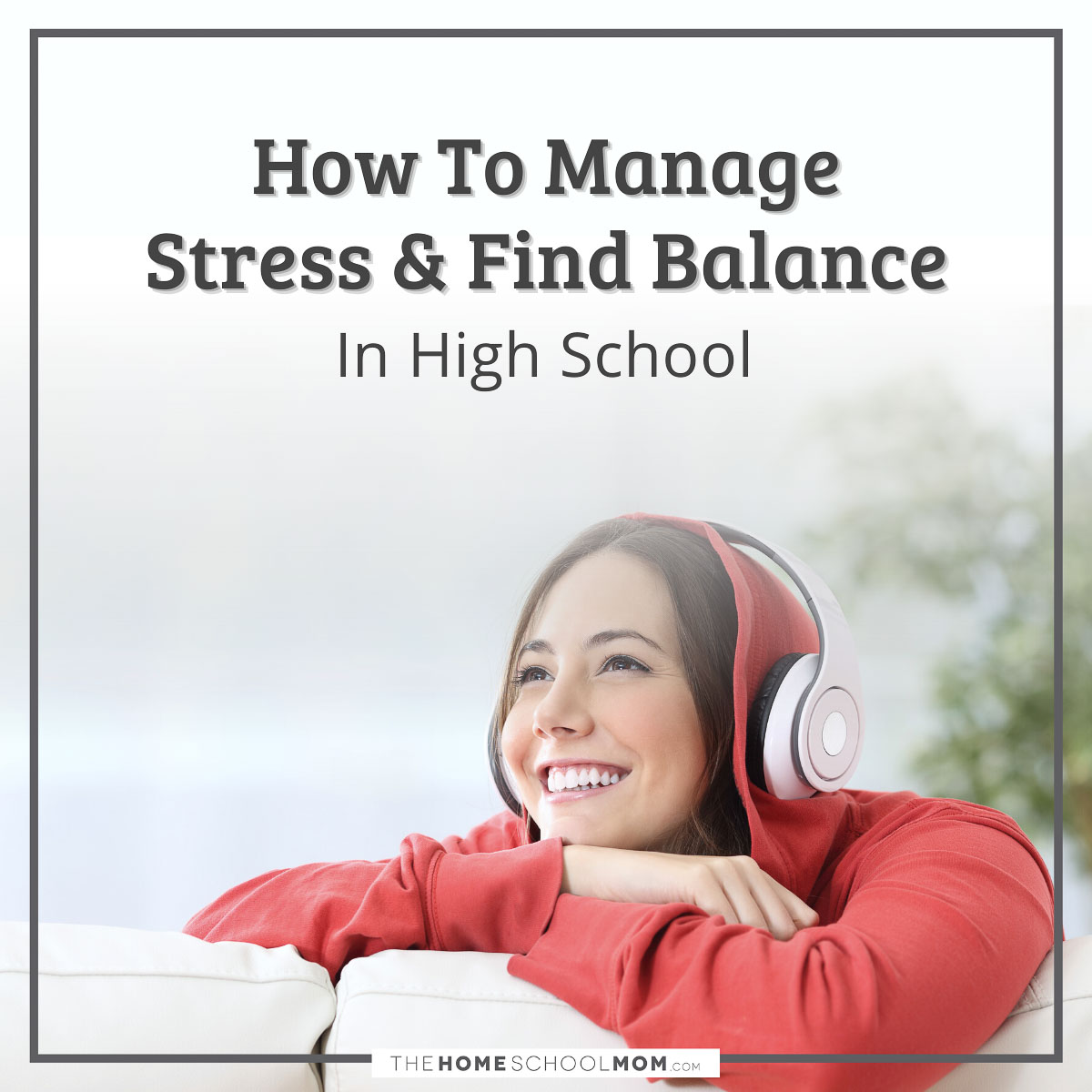This post is contributed by Oak Meadow, the sponsor of our Living Education series.
For a high school students, seeking balance is essential. Being out of balance almost always leads to feelings of stress, which can limit our ability to absorb new information and engage with learning in a meaningful way.
To help your high school student maintain a sense of balance and joy amidst the day-to-day stresses of high school, consider sharing these six tips with them.

- Reconnect with what energizes you
What energizes you? What helps you feel centered and creates harmony within you? You might reconnect through hiking, yoga, journaling, gardening, art, or some other activity.
Find something that works for you, and do it every day. Do it first thing in the morning to help you embrace the day with greater purpose and energy. Do it when you need a break to help you clear your mind and recharge for the next thing. Do it after your work is done to help you unwind and relax.
- Re-examine your routine
Through our thoughts, feelings, and actions, we all create our lives moment by moment. And our daily rhythms and routines can set the stage for either a balanced and productive life or one that increases feelings of stress.
Start first with your basic eating and sleeping habits. Studies show that actions like reducing the amount of sugar or processed foods you consume can improve your mood, and getting a solid 8-10 hours of sleep per night can improve your attention and memory.
You should also revisit your homeschooling schedule. If work is feeling overwhelming, you may find balance by organizing your schoolwork using a weekly planner. In your homeschool planner, divide large projects and assignments into smaller tasks, and check them off as you complete them.
Make sure you schedule in designated times for breaks and fun. Giving yourself permission to stop working and knowing that you have planned when the work will get done can help eliminate any nagging feeling that you should be working all the time.
- Pay attention to your internal GPS
Envision a see-saw with mental activity on one end, physical activity on the other end, and feelings in the middle as the balance point. We all know how easy it is to overemphasize or ignore one or more of these aspects, and we know what happens to the see-saw when we lean too far in one direction.
Check in with your internal GPS every now and then to figure out where you are. For example, if you’ve been engaged for long hours on a computer, you probably need to switch gears and do something physical. If you’ve been busy with athletics or a job, you may need to sit for a bit and read a book.
Remember to check in with yourself and strive for a balance between mental and physical activities in the rhythm of your day.
- Allow yourself to feel
Our innate capacity to feel is one of our greatest tools. It helps us to clearly perceive what is going on in ourselves and others, and to communicate effectively. When you are feeling overwhelmed or stressed, don’t force yourself to swallow and bury that emotion.
Acknowledge what you are feeling, and tune into the thoughts that keep rising to the surface. Allowing yourself to feel and recognize your emotions will allow you to manage your stress and communicate your needs more effectively.
Additionally, tapping into your emotions not just in moments of stress but also in moments of joy will help you maintain perspective and balance. If you are walking down the street, look at the trees, the plants, and the sky around you and appreciate nature’s beauty. Soak it in on a feeling level.
By opening your heart to simple acts of feeling as you experience the events of each day, you will find that your mind becomes quieter and you feel more stable and poised.
- Recognize your triggers
It’s no surprise that life often feels unbalanced. Consider how we are bombarded by external stimuli: masses of information, constant sounds, looming due dates, social media updates, household responsibilities, relationship issues, and more. By learning to recognize what triggers a sense of stress, we can help restore balance.
If you feel you can never get anything done because you have to respond to every text message as it comes in, maybe you want to turn off your phone or silence it when you’re doing schoolwork. If chores are stressing you out, add them to your planner so you know when you will take care of them. If the noise of younger siblings or a television bothers you, try using sound-canceling headphones or listening to music. Take notice of what triggers your stress, and make changes to limit their effect on your mood.
By following these guidelines, you can regain your innate balance and become more effective in school and life. Learning is not just about developing intellect; learning should be about developing intelligence, which arises from physical, emotional, mental, and spiritual balance. This balance will help you become a fulfilled, self-directed learner and a dynamic individual who can have a positive impact upon the world.
- Don't be afraid to pause
Finally, if you ever find yourself seriously worried about your stress levels, don’t be afraid to hit the pause button. One of the benefits of homeschooling is the freedom to set your own schedule, and that includes taking a break from school all together. Take the time you need away from academics, and seek guidance from a counselor, therapist, or other professional, if you need it, for stress-management tools and techniques.
It may sound counter intuitive, but taking a break each day to recharge can help you be more productive and successful. So, slow down, take a deep breath, and take the time to reconnect to the joy of learning.




 Enjoy these posts from the pages of Living Education, the seasonal journal from our contributing sponsor,
Enjoy these posts from the pages of Living Education, the seasonal journal from our contributing sponsor, 
Leave a Reply